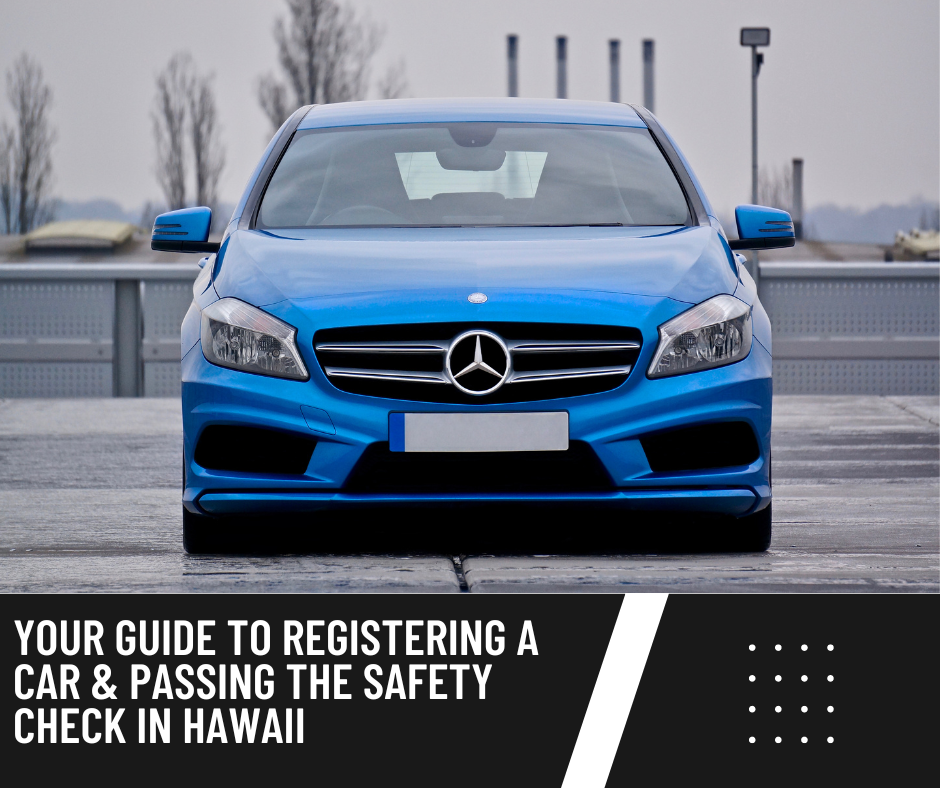When you import a car into Hawaii, your car will need to be registered and pass a standard safety check before you can legally drive it. The process is relatively straightforward, but there are a few components you’ll need to know about. Let’s explore how to register a car and pass the safety check in Hawaii.
What You Need to Register a Car in Hawaii
Hawaii has dedicated inspection sites across the island, including Honolulu, Maui, Hilo, Lihue, and other cities. You’ll need to visit your selected location with the car’s original insurance card and its current registration.
The safety inspector will review your documents. If your car is from out of state, it will automatically fail the safety inspection — don’t panic! This is part of the process so that the state of Hawaii can issue you a new registration.
Most privately owned vehicles will be issued a one-year safety inspection certification. The cost of the safety inspection is about $20, which you will need to pay at the time of the inspection.
For more information, you can also visit:
How to Pass Hawaii’s Car Safety Check
During the car safety inspection, your inspector will be testing various components of your automobile and looking for specific things. These include but are not limited to:
- Steering: Excessive wear and tear, damage, missing pieces, or mounting issues.
- Tires and Alignment: Tread depth, signs of damage, different sizes, etc.
- Suspension: Looseness or excessive wear
- Lights: Proper function and color, cracking, dirtiness, or obscurity
- Fuel System: Missing components, leaks, cuts, bad repair jobs, etc.
- Brakes: Leaks, damage to pads, thinning pads from normal wear, broken or missing components, etc.
- Exhaust: Excessive noise, cut-outs, improper placement, etc.
- Horn: Volume
- Auto Glass: Cracks, chips, missing glass, discoloration, window tint that doesn’t comply with local laws, stickers that obscure the driver’s view, etc.
- Mirrors: Proper mounting, broken, discolored, improperly placed, etc.
- Seats and Seatbelts: Missing or broken components, seat belts that don’t latch properly
- The Frame: No missing fenders or bumpers, frame components should be made of approved materials, not hazardous to passersby or other drivers, etc.
- Speedometer: Missing, broken, or improperly mounted
Examining your car ahead of time for the above issues can help you avoid having to repeat your Hawaii car safety inspection. However, keep in mind that during Hawaii car transport, your vehicle may sustain some damage. You’ll want to inspect your vehicle yourself upon arrival to document any potential damage and follow the proper channels.
What Else to Know about Car Shipping to Hawaii
Authorized service stations and vehicle repair shops can conduct your Hawaii car inspection. For items that don’t pass inspection, you’ll be in a good place to schedule the necessary repairs and get your vehicle ready for the road.
If you’re considering car shipping to Hawaii, you can prevent damage incurred during shipping by working with a reputable company. Coastal Auto Shipping has you covered — give us a shout today!
